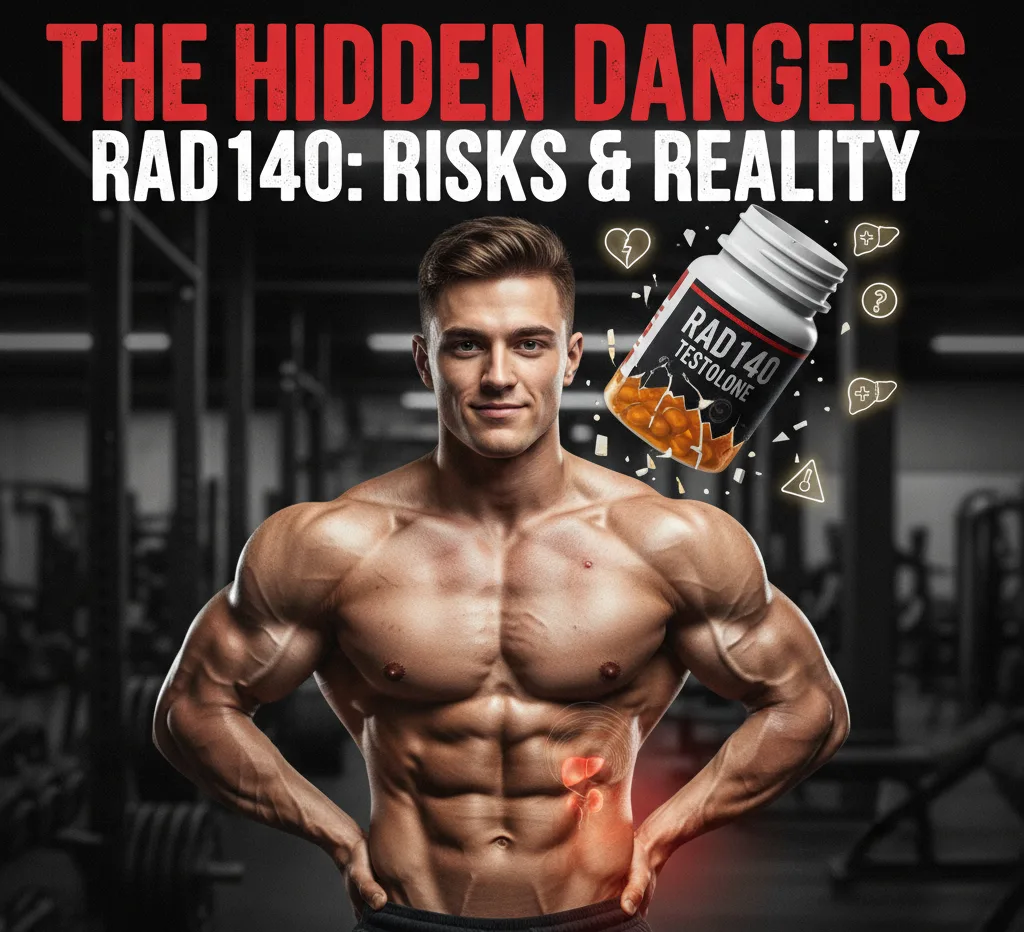RAD140, or Testolone, is a selective androgen receptor modulator (SARM) that's become popular among young men and amateur bodybuilders. Many believe it to be a safer alternative to anabolic steroids due to its targeted action on muscle and bone tissue. However, this perception is misleading. While it may not have the same side effects as traditional steroids, it comes with its own set of significant risks. In fact, many professional bodybuilders avoid this compound, and for good reason.
What is RAD140?
RAD140 is a nonsteroidal SARM derived from the oxadiazole aniline group. It was initially developed to treat conditions like muscle wasting (cachexia) and osteoporosis. Early research, including studies from as far back as 2011, showed its ability to increase muscle mass. Later, in 2017, it was also investigated for its potential to help with breast cancer. Furthermore, numerous animal studies on rats have demonstrated its potential neuroprotective effects, suggesting a possible future use in treating neurodegenerative diseases. There's also some research interest in its potential to treat sarcopenia, a condition characterized by age-related muscle loss, but more research is needed in this area.
The Promised Benefits
RAD140 is sought after for its performance-enhancing effects. Users report a range of benefits, including:
-Increased muscle mass and size
-Enhanced strength
-Reduced recovery time
-Pumps and vascularity
-Fat burning
A key advantage often touted is that it does not aromatize, meaning it doesn't convert to estrogen, which is a common side effect of many anabolic steroids.
The Hidden Dangers: A Long List of Side Effects
Despite its reputation for being "safe," RAD140 carries a number of concerning side effects, some of which can be severe. These risks are why many experienced athletes and professionals avoid the drug.
Hormonal & Endocrine System
HPTA Suppression: This is a major concern. RAD140 suppresses the hypothalamic-pituitary-testicular axis (HPTA). This means your body's natural testosterone production is significantly reduced. While on the drug, libido can increase dramatically, but off-cycle, testosterone levels plummet, which can lead to gynecomastia (the development of male breast tissue) as the body's estrogen levels become disproportionately high.
Total Test, Free Test, SHBG & PSA: RAD140 use can negatively impact these key hormonal markers. It can lower total and free testosterone, alter Sex Hormone-Binding Globulin (SHBG), and can even affect prostate-specific antigen (PSA), which is a blood test marker for prostate health.
Fertility & Semen: Suppression of the HPTA can also impact fertility and semen quality.
Cardiovascular & Internal Organ Health
Cardiovascular Issues: Users can experience an increased heart rate and elevated blood pressure, which can put a strain on the cardiovascular system.
Liver & Kidney: In 2020, there were two reported cases of severe liver disease after nine months of RAD140 use. The drug can cause a disorder of the liver and kidney enzymes. Some users also report cloudy urine and kidney pain.
Lipid Profile: RAD140 can negatively alter your lipid profile, increasing bad cholesterol (LDL) and decreasing good cholesterol (HDL), which can lead to long-term heart issues.
Physical & Mental Side Effects
Hair Loss: Users may experience slight hair thinning.
Skin: Acne is a common side effect.
Mood & CNS: RAD140 can affect the central nervous system, causing changes in mood, aggression, and concentration.
Back Pumps: This is a common and often painful side effect. Back pumps are a cramp-like pain in the lower back, often experienced during training. This is due to the kidneys being overworked from the compound.
Dizziness
Tendon Injuries: Some users have reported an increased risk of tendon injuries. This could be due to the rapid increase in strength without a corresponding strengthening of connective tissues.
Dosage and Cycle
The general recommendation for RAD140 is to start with a low dosage and not increase it if you are getting the desired results. Dosages typically range from 5 mg to 40 mg per day. Cycles should be kept short, no more than 6-8 weeks, to minimize the risk of severe side effects. Following the cycle, a proper post-cycle therapy (PCT) is essential to help the body restore its natural hormonal balance.

